Last-Minute NYC Holiday Gift Guide 🎁
We’ve created a holiday gift guide with presents for the intrepid New Yorker that should arrive just in time—


In addition to everything that New York City is known for, the city is also one of the largest waste-generating cities in the world, with over 14 million tons of trash created each year, according to a PLANYC “Solid Waste” document from 2011. Roughly a quarter of this comes from “public waste” (city residence, government buildings and some non-profits), which is collected by New York’s Department of Sanitation (DSNY). Depending on the material, the waste collected is treated in different ways—some solid waste is sold to raw material processing companies, some converted into energy at plants, and some even shipped as far away as China or India. However, up until the mid 20th century, up to eighty percent of the City’s waste was dumped in the ocean, which in many cases led to the creation of landfills.
Along a sliver of shore in southern Brooklyn between Marine Park and Jamaica Bay exists the remnants of one of New York City’s old landfills from the 20th century. Dead Horse Bay retains vestiges of the City’s history—or at least the remains of the City’s trash from forgone times. Sequestered from the rest of New York City, the shore of Dead Horse Bay is strewn with thousands of bottles (broken and intact), shards of glass, and other non-decaying items—the indecomposable remains of the landfill burst of the 1950’s.
From the 1850’s until the 1930’s, the bay—which sits at the western edge of the marshland—was dotted by numerous horse-rendering plants, where the carcasses of dead horses from the streets were used to manufacture glue, fertilizers and other products—hence the name Dead Horse Bay. Around the turn of the century, the marsh of the bay began to be used as a landfill, only to be filled and capped by the 1930’s. However the cap burst in the 1950’s, spewing trash onto the beach. What remains today is the clutter of garbage, mostly glass, that covers much of the shore.

Photo by Shervin Abdolhamidi
This fascinating manifestation of New York City history has been explored in the exhibit Dead Horse Bay: The Glass Graveyard of Brooklyn. Curated by writer Allison C. Meier, the exhibit is on display at the UrbanGlass until March 26th and features pieces from 13 artists, predominantly revolving around the theme of glass at Dead Horse Bay. The prevalence of glass is not only used as inspiration for the exhibit, but also to raise awareness about the site itself.
“I hope there will be more visibility,” Meier says. “For decades, it’s been this overlooked environmental scar. I think the work on view at UrbanGlass from the 13 artists demonstrates that people are deeply interested in its history.”
Recently, we had the chance to explore the exhibit and speak to the director of UrbanGlass, Cybele Maylone.
UrbanGlass, which celebrates its fortieth anniversary this year, was founded in 1977 by a group of artists who had moved to New York City and sought adequate facilities where they could continue to create glass-based art. Seeing that decent facilities for glass blowing were hard to come by, the artists formed what was originally called the New York Experimental Glass Workshop, a shared studio space that would facilitate access to resources that artists needed. In 1991, the organization moved from Mulberry Street to their current location on the corner of Fulton Street and Rockwell Place in Brooklyn and changed their name to UrbanGlass. The studio is currently located in the former Strand Theater, which they share with BRIC (a non-profit art organization) in what used to be the theater district of Brooklyn.

UrbanGlass hosts over 200 professional artists in their 17,000-square-foot space, who make everything from neon tubes to everyday household glass items, or pieces of jewelry, some of which are sold in the store downstairs. The space provides artists with studio facilities and equipment that they would not be able to find anywhere else in the city. As director Maylone says, “The reason we were founded is the reason we still exist—studio space in New York for artists is a nightmare.”
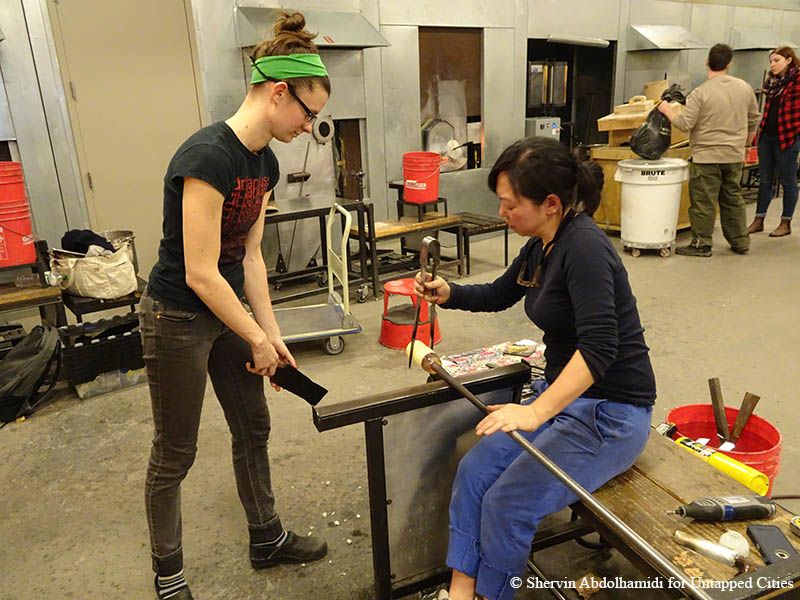
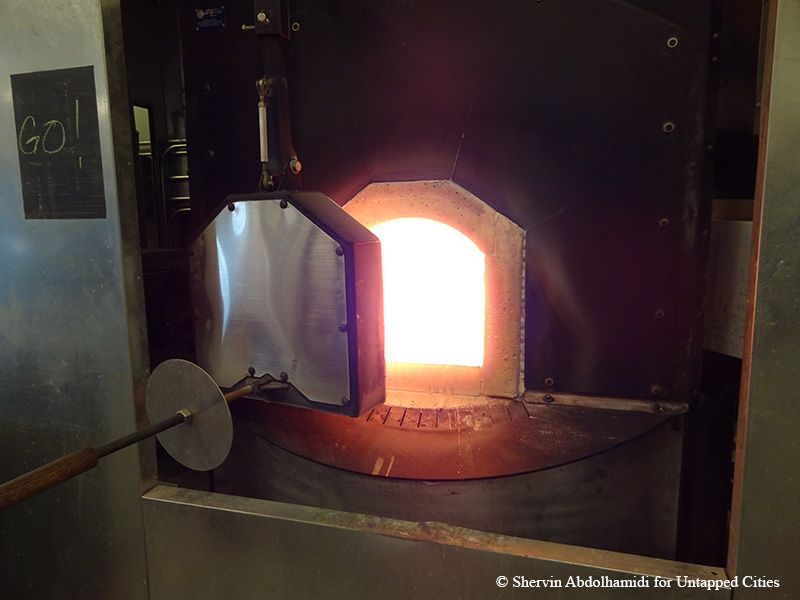
Currently, Dead Horse Bay: The Glass Graveyard of Brooklyn is on display until March 26th. “One of the more interesting things [about Dead Horse Bay] is that you are able to capture lives from all the domestic objects out there,” Maylone remarks. “Glass is part of our archaeological record and so this is part of that record as well.”
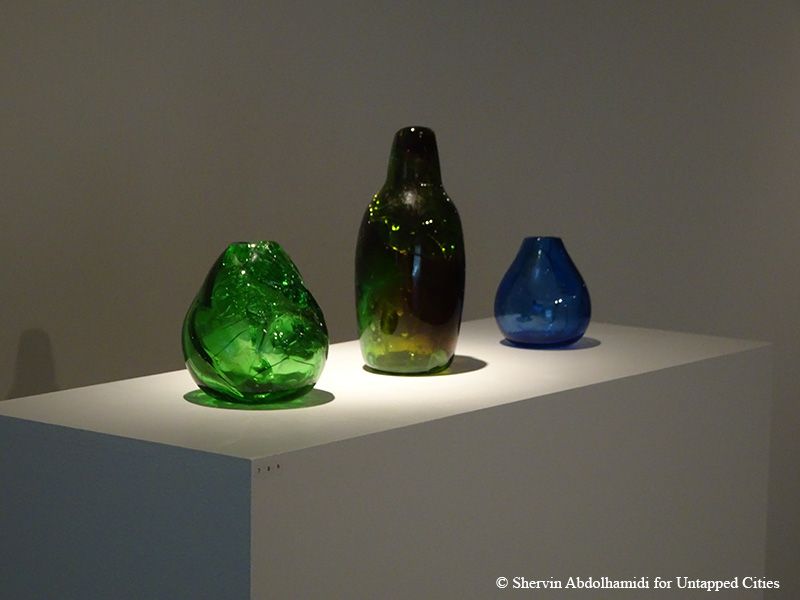
On display in the exhibit are three glass vessels by David Horvtiz. While they are fairly consistent in color, there are cracks and bubbles in the vessels, which underscore the incompatibility of glass made from different compositions. According to Maylone, one of the common misconceptions about glass is that when you put a few bottles of the same color in your recycling bin, they will be melted down and made into something new. However, the different recipes for glass do not always make them compatible. “A lot of his work is about conflating time and distance,” Maylone says. Through the piece, Horvtiz is able to physically embody the incompatibility of glass from different eras, as demonstrated by the various strands that chafe against each other within the vessels.
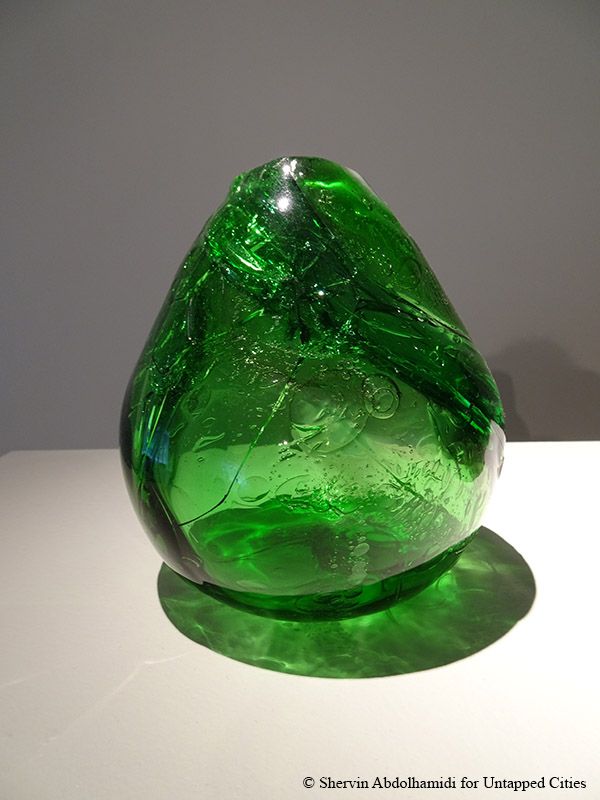
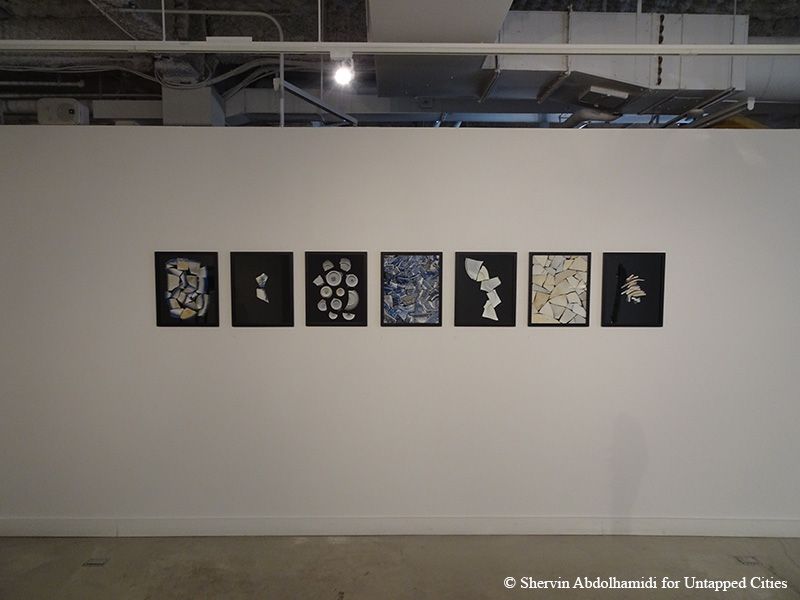
Another fascinating piece is a series of images by Yael Eban, displaying shards of china from different backgrounds and eras, which are placed in puzzle-like arrangements. The piece evokes a sense of inquisition into the past life of the porcelain pieces, and we’re left to wonder who they belonged to and where they were made. Eban’s photographs explore the life cycles of these scattered shards along the beach of Brooklyn, from eroding trash to fragments on the surf.
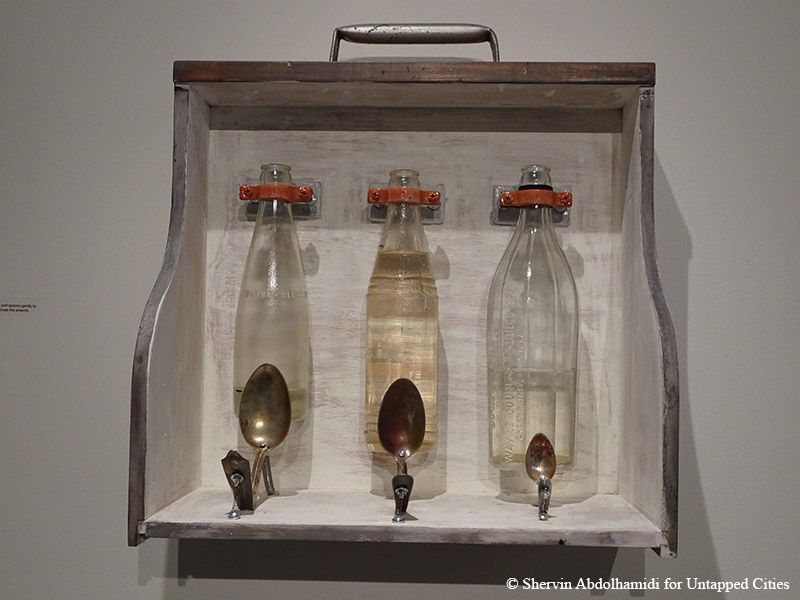
The examination of domestic objects, and what they portray about the past, is also evident in Alex Branch’s piece, whose work recreates the sonic element of glass brushing against each other as the waves lap at the shore. It’s comprised of glass bottles and spoons found on Dead Horse Bay; the viewer is allowed to interact with the piece by clinking the spoons against the glass bottle.

The exhibit also features images of the shore, and the conflict between nature and debris, by photographer Nathan Kensinger. In one image, some plant growth can be in a murky bottle, inundated with seawater. Kensinger, who has been photographing the evolution of Brooklyn’s post-industrial waterfront for the past decade, describes the beach as a visual of New York City’s environmental destruction. “I became fascinated by how the entire area revealed the layers of human interference in nature in such a unique way,” he remarks.

Among other discarded junk along the shores of Dead Horse Bay are spark plugs. Artist Brett Swenson’s piece features a spark plug cast at the bottom of a pedestal and another inundated in water and shrouded in hydrophilic polyurethane. The object, as a result, has been growing in size over the course of the exhibit. Maylone believes the piece is evocative of the experience objects are having as they are submerged underwater, washed ashore and submerged once again.

One of the themes of the exhibit is the undertone of tension that exists between artists, who have the impulse to take things from Dead Horse Bay, the National Park Service, which opposes this action, and other people who are concerned about the historical values of the objects. Artists who created the pieces were drawn to Dead Horse Bay by the virtue of its existence in New York City, Maylone explains. And so, while there isn’t an explicit call to action, the exhibit does raise awareness about Dead Horse Bay.
“Next time you consider throwing a beer bottle on the beach know that it may be there in a thousand years,” Maylone says.
“Artists can be essential voices in calling attention to the overlooked, yet the city or the National Park Service could do things like create a relationship with the people who are already drawn to Dead Horse Bay,” curator Allison C. Meier tells us. “Maybe by using crowd-sourced mudlarking to create an archive of historical objects, such as the permits offered for searching and digging in London along its Thames river, or by hosting events that acknowledge the mistakes that were made in turning this beach into blight, and considering its context in a world of rising tides from climate change, and receding environmental regulation under the current presidential administration.”
“In an ideal world, I’d love to see something like what was done with the Naval Cemetery Landscape at the Brooklyn Navy Yard, where a boardwalk hovers over the unmarked burial ground. It’s possible to respect a place’s complicated history, and also make it accessible for people to explore.”
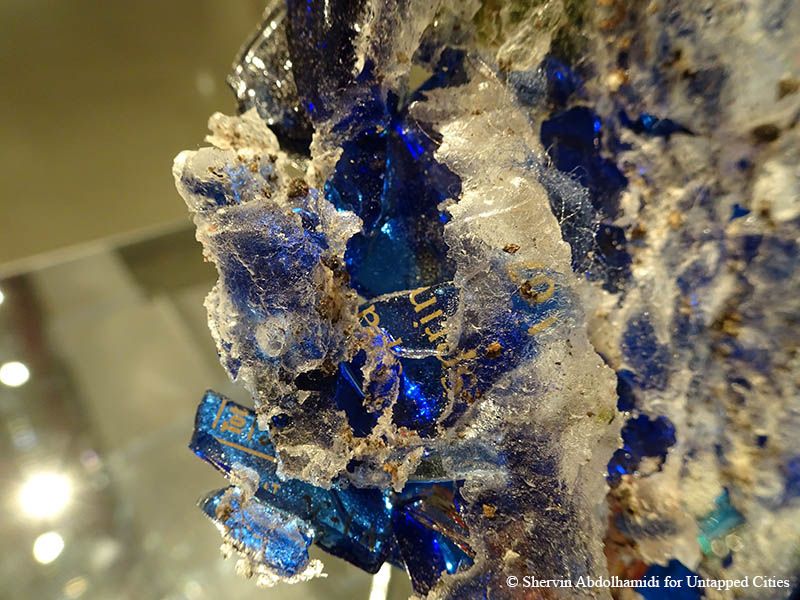
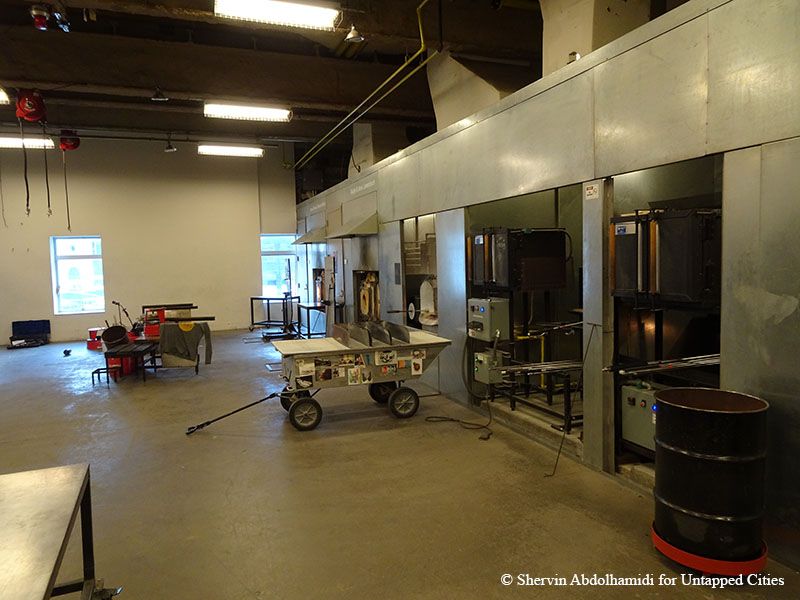
Next check out Urban Exploration in Dead Horse Bay, Brooklyn, Cities 101: How Does NYC Recycle? Video Look Inside Sunset Park Material Recovery Facility, “Landscape in Motion” Looks at Freshkills Transformation from Landfill to Park and 12 Outdoor Art Installations and Exhibits Not to Miss in NYC in February 2017
Subscribe to our newsletter